- Home
- Stuart Woods
Blue Water, Green Skipper: A Memoir of Sailing Alone Across the Atlantic Page 5
Blue Water, Green Skipper: A Memoir of Sailing Alone Across the Atlantic Read online
Page 5
About a thousand miles southwest of Capetown, South Africa, Blazer was rolled over in 120 knots of wind and dismasted. Bill sailed her to Capetown under a jury rig and shipped her back to England for repairs. Those completed, he set off again, and had to put into Gibraltar because of rigging problems. The yacht was once again returned to England, and he set off again. By this time, Robin Knox-Johnston was, beyond doubt, the winner of the race, Moitessier having continued to sail on to Tahiti after rounding Cape Horn, and the others having turned back or lost their boats. But Bill King was determined to complete his voyage for his own personal satisfaction.
On his third attempt, he was sailing two hundred miles off western Australia when the yacht was attacked by a great white shark and badly holed. In a magnificent act of seamanship and personal courage, Bill temporarily plugged the hole and sailed into port. Repairs completed, he finished his voyage without another stop, arriving back in Galway in early 1973, shortly after I had moved there. I had met him socially once or twice and had told him of my long-range plan of doing some deep-water sailing. He invited me to come and talk with him about it.
At the boat show I had been delighted to find that the Multihull Offshore Cruising and Racing Association (MOCRA) had organized a race to Horta, in the Azores, for August 1975, the very time I had been thinking of sailing there. I signed up immediately. Now I went to see Bill King and asked if he’d like to come. He had not sailed at all since returning from his circumnavigation, but two years had passed and he must have been getting itchy for the sea. He accepted immediately. He would sail out with me and one or two other people and would hitch a ride home on another yacht while I sailed back single-handed. He also offered to come to Cork when the yacht was building and share his enormous experience. I was delighted.
That accomplished, I packed my things into a furniture van and moved to Drake’s Pool Cottage, Coolmore, Carrigaline, County Cork.
Drake’s Pool Cottage. The mooring is right in front.
Eight
Waiting on Spring
Driving back to the cottage from Carrigaline, about three miles away and the closest village, it occurred to me how isolated I would be at Drake’s Pool. The road to Coolmore wasn’t really on the way to anywhere, except Currabinny, and that just barely qualified as anywhere. I thought the isolation would be good for work on the novel but not so good for social life. Still musing on my remove from the rest of the world, I arrived at the cottage to find a Watchtower magazine on my doorstep. It seemed that, to the Jehovah’s Witnesses, nobody was isolated.
The following day I was sitting among my unpacked books, typing a letter, when two pretty girls appeared at the front door. Terrific! Not so isolated, after all! They turned out to be the Jehovah’s Witnesses. Still … I invited them in and we got into a hot religious discussion. I was annoyed by the ease with which they backed up their convictions with seemingly ambiguous quotes from the scriptures, so I dug a Bible from one of the tea chests and fenced with them for a bit. I scored no points in this debate. There was always a ready scriptural reference, there to be taken literally. Finally, I asked how they felt about sex—outside marriage, I meant. Oh, no. Against the rules, and a couple of suspect verses were quoted. I asked if they believed in a just God. Oh, yes, certainly. Well, I said, I didn’t think a just God would require me to remain celibate just because I had happened not to get married. They made an excuse and left.
Worth Newenham, my new landlord, and his wife turned up with a gift bag of turf for the fireplace and stayed for a drink. I asked where I might get a bookcase built in the neighborhood. Books follow me about relentlessly wherever I go, multiplying steadily. When I had left London for Ireland I had given most of my library away, but the few I had brought with me (only about four packing cases full) had done their multiplication trick. The cottage would not be livable until I got them out of the boxes and into a bookcase, a large bookcase. Worth suggested I talk with Nick Roe, who was living on an old trawler on a mooring in front of the cottage, rebuilding it. Nick Roe was to become a very important part of my project, before it was all done.
Nick stopped by later with his brother and girlfriend. They were all living on the boat, which was quite, quite large. Nick was very busy with his work, but he agreed to build the bookcase for me.
Gradually, things got unpacked, and I settled in. Ron dropped by now and then. I visited the boatyard, where the new factory for the series production was now complete and the first hull and deck was being molded. The factory looked good, and I felt more confident about the building of the boat. I had conversations about alterations to the boat with the production manager and with George Bush, who would be in charge of the extra work.
On the sponsorship front, I started with The Irish Times, perhaps the best of the Irish national newspapers. I had a meeting in Dublin with a member of their management and their advertising agency, and they expressed interest in sponsoring the project, perhaps in concert with another Irish company, yet to be found. I started looking. I tried Guinness first. They seemed a logical place to start, and through an acquaintance, they gave a logical reason for not sponsoring; they had cut back on all but existing sponsorship; they had just turned down a pub in Waterford for a trophy for their darts championship. They could hardly turn them down, then have the lads see on TV that they were sponsoring a yacht, could they?
To save time in explaining what I was doing, I wrote a description of the project and had copies run off. I began sending these to prominent Irish companies, since I intended being an Irish entry. A rule of the race stated that the nationality of the entry would be the nationality of the skipper. In December, when I had written to the committee formally reserving a place in the race, pending the qualifying cruise, I explained that although I was an American I had lived for some time in Ireland and had learned to sail there from Irish yachtsmen on Irish boats, and I requested that an exception be made and I be allowed to become an Irish entry. I had received a letter from the Royal Western Yacht Club saying that would be fine. Shortly after reserving my place I noticed an article in The Observer by yachting correspondent Frank Page, giving the number of entries by nationality. No Irish entry had been mentioned, and I dropped him a note saying that there would be an Irish entry, and since I was looking for Irish sponsorship, could he please say so sometime in his newspaper?
My race number of twenty-four was also confirmed. This number might pose something of a problem, since it had to be displayed on the sails, hull, and deck, and I was also entered for the MOCRA Azores race, which might assign me a different number. The problem was solved by asking MOCRA to make me entry number twenty-four in their race, and by asking the Irish Yachting Association for the sail number IR 24; both requests were granted.
The new two-tonner, which would be called Irish Mist II, was quickly taking shape at Southcoast. When introduced to Archie O’Leary, the owner, I offered to crew on any delivery trips he might be making when his own racing crew was not available. He promised to keep me in mind.
I found myself extremely busy, although my boat had not yet begun building. I was hustling about, ordering equipment and trying to ensure that it all arrived in time for the launching of the yacht; I was working hard on the sponsorship problem; I was writing to manufacturers, asking for discounts.
Also, I was negotiating with a publisher about a book describing the project. Ron was working on a book for Stanford Maritime, and he and his editor stopped by the cottage for a drink. After hearing about what I was doing, he expressed interest, and eventually we signed a contract. Finally, I still wanted to do some advertising work in Dublin.
I was trying to do all of this with no help whatsoever from the Irish Department of Posts and Telegraphs. In Galway it had taken me fourteen months to wrench a telephone from their grasp, and they had assured me that, as an existing subscriber, when I moved to Cork there would be no problem getting a telephone immediately. (The word “immediately” has no meaning in Ireland. It’s just a word.)
However, when I arrived in Cork, although my application had preceded me by more than a month, nothing was happening. Finally, after weeks of telephone conversations (they never, never actually wrote any letters, although I would periodically receive a printed form telling me that my problem was being dealt with) they finally told me that nobody who lived more than a quarter of a mile from an existing telephone line could be provided with service, and that I lived 175 yards beyond that distance. Although I clawed my way through what seemed like the entire Irish Civil Service, the situation remained frozen for months.
Other communication systems were, however, working. One bright Sunday morning I awoke to find that, having left the reversing lamp on my car on all night, the battery was completely dead. Being some distance from a telephone, I had another idea. The VHF radio-telephone which I had bought at the London Boat Show was a self-contained one, having its own power supply. Technically, the radio was not supposed to be operated except on the yacht, and only after having been licensed. The boat did not even exist yet, and I had not even applied for a license, but I got out the list of Irish coastal stations and the instructions for transmission procedure. I studied them for a few minutes and then switched on the radio.
“Cobh Radio, Cobh Radio, Cobh Radio (the Cork Harbor station), this is Woodsmoke, Woodsmoke, Woodsmoke (a tentative name for the yacht). Do you read me?” Silence for two minutes, the instructions said. Then if no reply, try again. I tried again.
I jumped about a foot when a clear voice said, “Woodsmoke, Woodsmoke, Woodsmoke, this is Cobh Radio, Cobh Radio, Cobh Radio, what is your position? Over.”
“Cobh Radio, I’m at Drake’s Pool, uh, ashore, uh, and I have a problem with my car. I wonder if you could possibly telephone the AA for me? Over.”
Silence. He probably didn’t think he was hearing properly. Then he came back. “Woodsmoke, we don’t ordinarily do that sort of thing, but we’re not too busy right now, and I’ve been in that position myself. How will the AA find you? Over.”
“I’m at Drake’s Pool Cottage …”
“Cottage!” he interrupted. After all, this was supposed to be a ship-to-shore radio.
“Ah, yes, there’s this cottage, and my car is parked there.” I gave him the complicated directions for finding me and we signed off.
An hour later an AA man appeared, scratching his head and saying that he’d never had a call like this one before. I had half expected the police, but a minute or two later the car was started. I never used the VHF ashore again, though.
The Dublin Boat Show rolled around, and I used the trip to Dublin to check on what was happening with The Irish Times. Nothing, apparently. However, Exide had agreed to donate the batteries for the boat. It was the first equipment I had been given, and was a lift to the spirits. The Dublin show seemed small after the London one, but it was interesting, and I bought an outboard motor for the dinghy and a few small things.
Back at Southcoast, the first deck went onto the first hull of the new series. It was the first glimpse I had of anything like the complete boat, and I was impressed with what a pretty craft she was going to be. The first and third boats in the series were being sent out unfinished, in kit form, but the second boat, a bright red one which would be finished in the factory, was getting under way, and I was looking forward to seeing it take shape.
Then Fred vanished. He was grown now but still very much the puppy at heart, and he missed the dogs and children at Lough Cutra, especially the children. He had taken to walking the mile or so to the main gate of Coolmore, where a group of small kids gathered to play, and one night, he didn’t come home. To make matters worse, his collar and name tag had disappeared the day before, so nobody would know where he came from. As the days passed with no sign of him I took to driving around the countryside looking for him. He had been stolen twice as a puppy, but recovered, and I was increasingly worried about him. He was the only company I had in the cottage, and good company he was, always making me laugh, bringing me sticks to throw into the river for him to retrieve. He liked swimming better than walking, being a Labrador. I put notices up in the post offices in the surrounding villages. He was seen at Ringaskiddy, then Currabinny, then Douglas, eight miles away. There were apparently a lot of golden Labradors about. Since I didn’t have a phone, Ron was taking the calls, and they were coming in at the rate of two or three a day. I got one from Kanturk, twenty miles away, but it turned out to be a different Lab. Finally, I put an ad in the Cork Examiner, and someone in Douglas called. They had had a strange Labrador about for days. I went to Douglas. It was Fred. He had been gone for two weeks. The minute he was home he had a stick in his mouth, ready for his swim. He got a new collar and ID tag the same day.
Fred, bored with chasing sticks, takes on a tree.
Nine
Organize, Organize, Organize
In late March we had the second of our navigation classes in Galway, and I managed to get a lot into the weekend. I had dinner with Harry and Lorna McMahon, and although Bill King was away (skiing), his wife, Anita, joined us. What a delightful woman she is. We talked about her best-selling book, Jenny, based on the life of Winston Churchill’s mother. Anita’s grandmother was Jenny’s sister, and Anita had known Lady Randolph Churchill as a child. The television series based on the book was running at the time, and talk centered on that. She mentioned that Bill was looking forward eagerly to the Azores trip. I asked Harry to come as well, but he was doubtful whether he’d be able to manage the time. I had already invited Ewan Southby-Tailyour, but he wasn’t sure whether the Royal Marines would give him time to do the Azores race and the OSTAR in successive years.
Our navigation class went well, and we agreed to spend our final weekend, in April, cruising to the Aran Islands and back, putting our newfound knowledge into practice.
Back in Cork, it was time to place my order for sails, and John McWilliam and I sat down to discuss this. Getting John McWilliam to sit down is no small feat. He is the only person I met during the whole of my stay in Ireland who is visibly energetic about his work.
John McWilliam is a northerner, from the Six Counties, and after engineering school did a spell with the RAF, doing individual aerobatics with the famous Red Arrows stunt team at air shows. After that, he did an apprenticeship with the Australian sailmaker Rolly Tasker in his Hong Kong loft, then opened a Tasker branch in Ireland. By the time I arrived, he had gone out on his own, making his sails on the main floor of an old stone mill on the hill behind Crosshaven, and living in a handsome flat on the top floor.
Visiting the McWilliam Sailmakers loft is an experience. You can feel the glass vibrating before you even open the door, and inside, sound strikes with a physical force. There is a souped-up stereo system driving a series of huge speakers, and the noise which comes out is overpowering to all but the demented teenyboppers with whom John McWilliam shares his musical taste. Through two more sets of sliding doors and into the loft proper, one comes upon Mr. McWilliam, loping about the varnished floor, carpet slippers on his feet, foam rubber taped to his knees, with a grace of movement not seen since the actor known as Stepin Fetchit plied the silver screen. John moves much faster, though, and constantly.
John is also very bright, and a first-rate man on a racing yacht. He is probably the only one of the world’s top three or four sailmakers who still cuts every sail himself, assisted only by his right-hand man and a harem of local girls, who, even while bent over their sewing machines, giggle and blush constantly. John makes up for being in an out-of-the-way place by delivering his sails to customers all over the British Isles and Europe in a twin-engine Piper Apache, the flying of which gives him enormous pleasure. He probably gives his customers a more personal and more effective service than some sailmakers located in hotbeds of sailing activity, such as the south coast of England. He claims to charge less, too, and his sails are nearly as good as he says they are.
The sail plan we worked out for my boat was made up of a mainsail, a large genoa (foresail),
a number-two genoa (slightly smaller than the large one), a medium-weight spinnaker for all-round use, a floater spinnaker for very light winds, and a smaller “starcut” spinnaker for reaching and for running in heavy winds. (Later we dropped the starcut, because I realized I wasn’t about to set a spinnaker, single-handed, in strong winds.) There would be no smaller headsail than the number-two genoa, because I intended to reef that sail rather than change down to a smaller one. This would be done by virtue of a device called a Dynafurl. It works this way: the sail, instead of being set on an ordinary wire forestay, is set on a grooved, solid rod forestay, called a Twinstay. In ordinary, crewed racing, a sail can be set on this stay while another one is still drawing, giving an advantage over conventional sail changing. The Dynafurl consists of two swivels, one at the top of the stay and one at the bottom. When reefing the sail, a rope is pulled and the sail wraps itself tightly around the forestay, displaying progressively smaller area. It can be reefed right down to storm jib size in this fashion.
My reason for choosing this system was twofold: (1) I reasoned that in a 3,000-mile race, an awful lot of time could be spent changing sails in changeable conditions, and the boat would be slowed during sail changes; (2) If the only sail change I had to make was from the number-one genoa to the number-two genoa, this would keep me off the foredeck in heavy weather, when it can be a very dangerous place. My only sail change would be made in less than fifteen knots of wind.
The mainsail, instead of having roller reefing, where the sail is rolled up around the boom, would have slab reefing, in which the sail is simply tied to the boom by a row of cringles (eyes) sewn across the sail. This would be faster single-handed, and the sail would set better as well.

 Beverly Hills Dead
Beverly Hills Dead Shakeup
Shakeup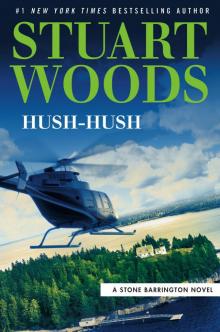 Hush-Hush
Hush-Hush Wild Card
Wild Card A Delicate Touch
A Delicate Touch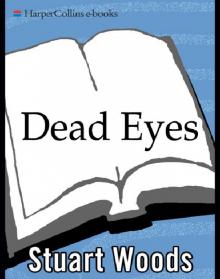 Dead Eyes
Dead Eyes Stealth
Stealth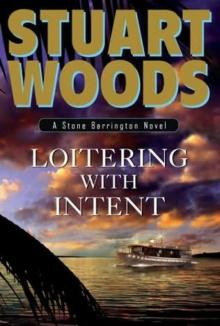 Loitering With Intent
Loitering With Intent Grass Roots
Grass Roots Scandalous Behavior
Scandalous Behavior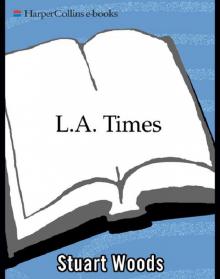 L.A. Times
L.A. Times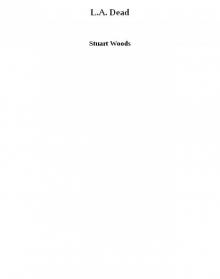 L.A. Dead
L.A. Dead Class Act
Class Act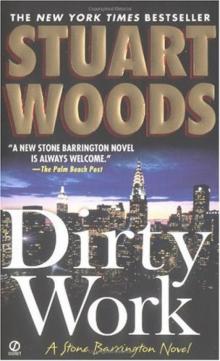 Dirty Work sb-9
Dirty Work sb-9 Bombshell
Bombshell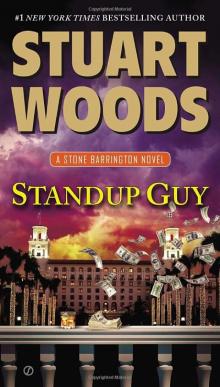 Standup Guy
Standup Guy Quick & Dirty
Quick & Dirty Stuart Woods Holly Barker Collection
Stuart Woods Holly Barker Collection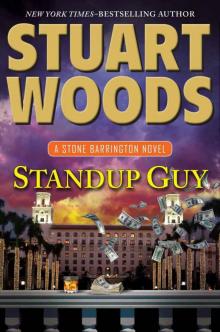 Standup Guy (Stone Barrington)
Standup Guy (Stone Barrington) Capital Crimes
Capital Crimes Kisser
Kisser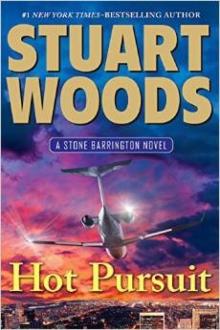 Hot Pursuit
Hot Pursuit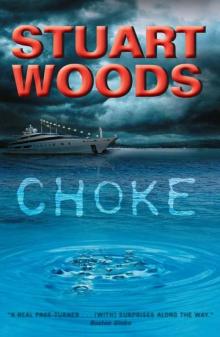 Choke
Choke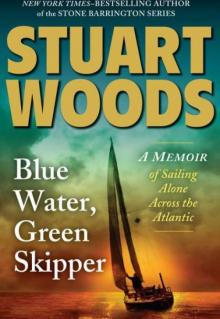 Blue Water, Green Skipper: A Memoir of Sailing Alone Across the Atlantic
Blue Water, Green Skipper: A Memoir of Sailing Alone Across the Atlantic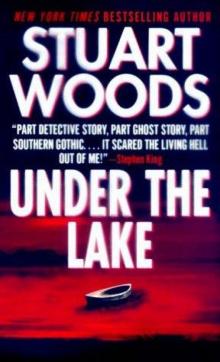 Under the Lake
Under the Lake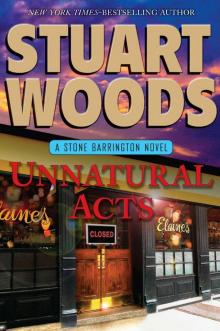 Unnatural acts sb-23
Unnatural acts sb-23 Doing Hard Time
Doing Hard Time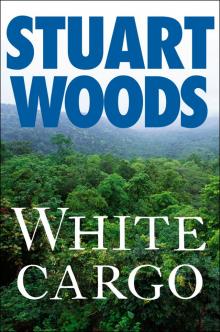 White Cargo
White Cargo The Prince of Beverly Hills
The Prince of Beverly Hills Severe Clear
Severe Clear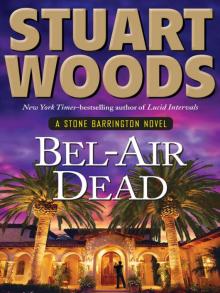 Bel_Air Dead
Bel_Air Dead Severe Clear sb-24
Severe Clear sb-24 Unnatural Acts
Unnatural Acts Dirt
Dirt Foreign Affairs
Foreign Affairs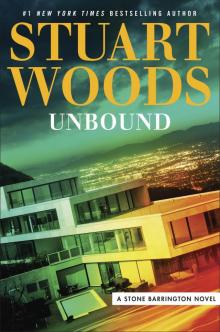 Unbound
Unbound Family Jewels
Family Jewels Foreign Affairs (A Stone Barrington Novel)
Foreign Affairs (A Stone Barrington Novel)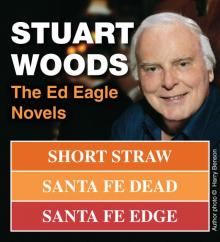 The Ed Eagle Novels
The Ed Eagle Novels Dirty Work
Dirty Work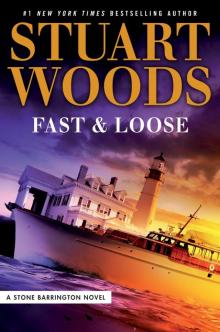 Fast and Loose
Fast and Loose Worst Fears Realized
Worst Fears Realized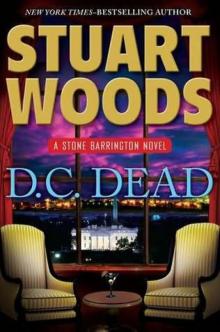 D.C. Dead
D.C. Dead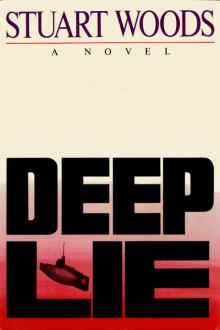 Deep Lie
Deep Lie Santa Fe Edge
Santa Fe Edge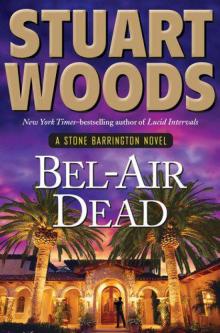 Bel-Air dead sb-20
Bel-Air dead sb-20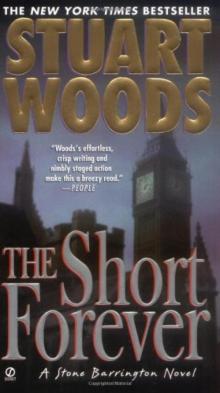 The Short Forever
The Short Forever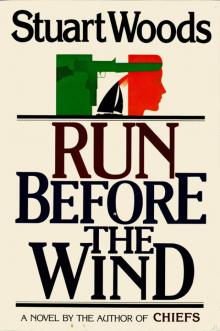 Run Before the Wind
Run Before the Wind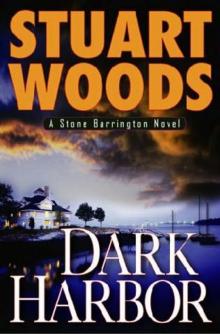 Dark Harbor
Dark Harbor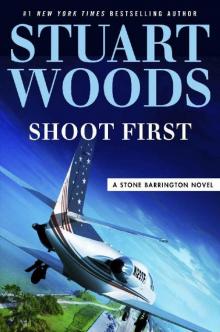 Shoot First (A Stone Barrington Novel)
Shoot First (A Stone Barrington Novel) Sex, Lies & Serious Money
Sex, Lies & Serious Money Santa Fe Dead 03
Santa Fe Dead 03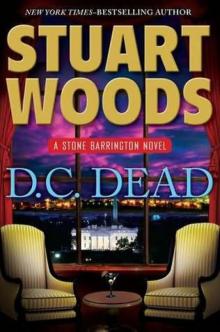 D.C. Dead sb-22
D.C. Dead sb-22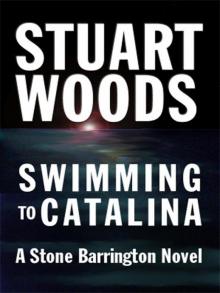 Swimming to Catalina
Swimming to Catalina Collateral Damage
Collateral Damage Hot Mahogany
Hot Mahogany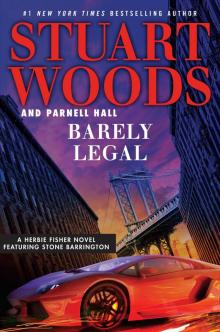 Barely Legal
Barely Legal Imperfect Strangers
Imperfect Strangers Paris Match
Paris Match Mounting Fears
Mounting Fears Mounting Fears wl-7
Mounting Fears wl-7 Shoot Him If He Runs
Shoot Him If He Runs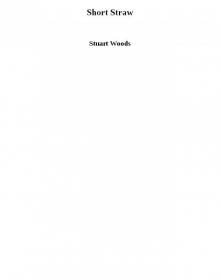 Short Straw
Short Straw Santa Fe Dead
Santa Fe Dead Dead in the Water
Dead in the Water Hothouse Orchid
Hothouse Orchid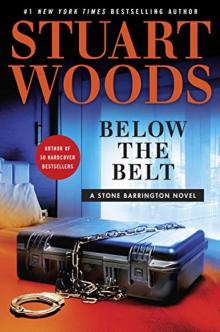 Below the Belt
Below the Belt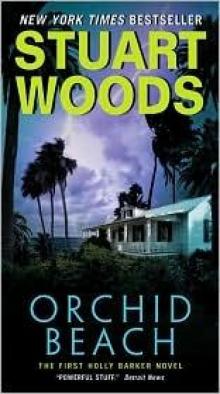 Orchid Beach hb-1
Orchid Beach hb-1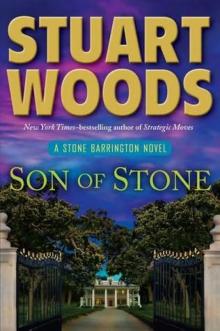 Son of Stone sb-21
Son of Stone sb-21 Cold Paradise 07
Cold Paradise 07 Blood Orchid
Blood Orchid Fresh Disasters
Fresh Disasters Lucid Intervals
Lucid Intervals Dishonorable Intentions
Dishonorable Intentions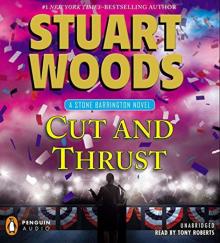 Cut and Thrust
Cut and Thrust The Money Shot
The Money Shot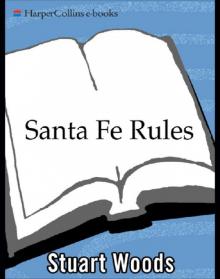 Santa Fe Rules
Santa Fe Rules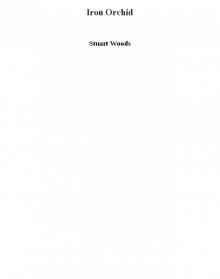 Iron Orchid
Iron Orchid New York Dead
New York Dead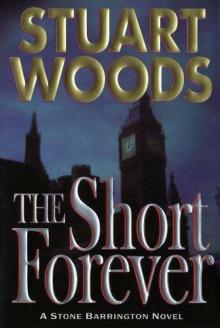 The Short Forever sb-8
The Short Forever sb-8 Son of Stone
Son of Stone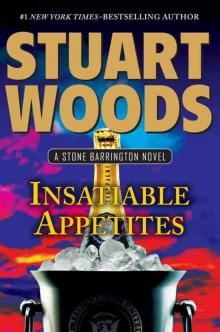 Insatiable Appetites
Insatiable Appetites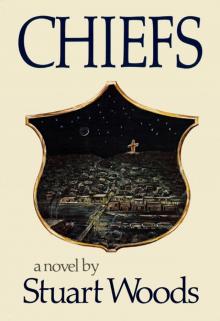 Chiefs
Chiefs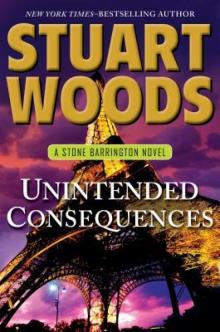 Unintended Consequences
Unintended Consequences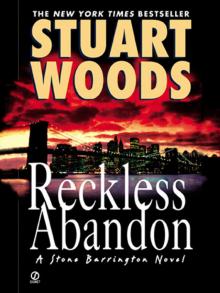 Reckless Abandon
Reckless Abandon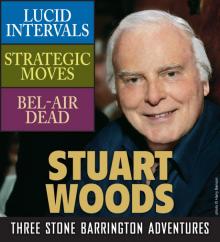 Three Stone Barrington Adventures
Three Stone Barrington Adventures Stuart Woods 6 Stone Barrington Novels
Stuart Woods 6 Stone Barrington Novels Shoot First
Shoot First Indecent Exposure
Indecent Exposure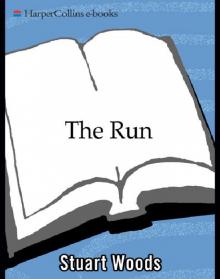 The Run
The Run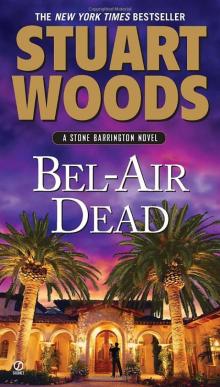 Bel-Air Dead
Bel-Air Dead Strategic Moves
Strategic Moves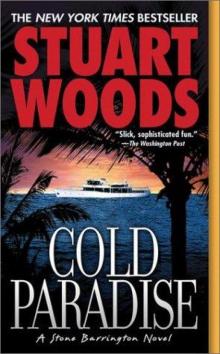 Cold Paradise
Cold Paradise